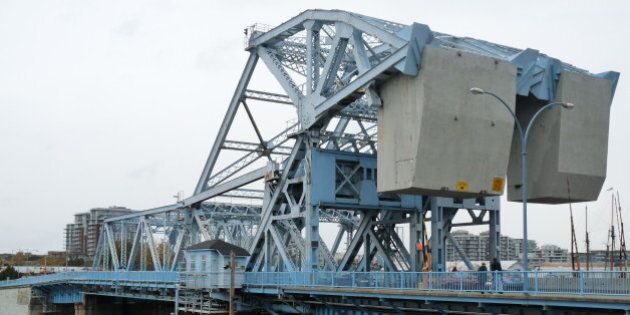
In 2012, local governments across B.C. spent more than $8 billion and it's a pretty safe bet that a good chunk of it was spent on infrastructure projects.
Most of the projects flew under the provincial radar. Out of sight, out of mind. Cost overruns rarely made a media ripple outside of the affected community.
Yet, through various cost sharing formulas, we're all on the hook for them one way or another, whether it's the Vancouver Convention Centre expansion or new roads in Campbell River.
It's why a recent audit by B.C.'s new auditor general for local governments, Basia Ruta, should raise some red flags.
Last month -- in the office's first ever performance audit of local government procurement -- Ruta stated that "the integrity of the capital procurement process in Rossland has been compromised and many of the transactions we reviewed did not meet the standards taxpayers would expect of their local government." Strong stuff.
Ruta also cherry-picked Sechelt's new Water Resource Centre (euphemism for sewage treatment plant) as one of five other performance audits her office is undertaking.
No surprise. What started out as a $10 million facility five years ago has morphed into a $25 million boondoggle that's still devouring cash.
Under Sechelt's original plan, the existing facility's downtown site was to be sold for redevelopment to help fund the new plant which was to be built on an industrial site on the outskirts of town.
Then council did an about-face and announced that the new plant would be built on the existing site after all. And although he vehemently denies it, the fact that the mayor's $1.16-million home is only a few hundred metres from that industrial site undoubtedly had little to do with council's change of heart.
Sechelt's new plant has a capacity of 4,000 cubic metres per day. Just down the coast in Gibsons, they built a 6,000 cubic metres per day plant for $5.4 million in 2005.
However, ratepayers can take some solace in the mayor's belief that the sewage plant will be a tourist attraction, giving rise to a possible new tourism pitch: "Come for the scenery, stay for the smell."
Then there's the mother of all sewage treatment plants: the $782.7 million Capital Regional District Core Area Wastewater Treatment Program or CAWTP for short. CAWTP has run into two small snags: a secret real estate deal that didn't work out so well once it wasn't so secret and Esquimalt council giving a firm thumbs down to the CRD's rezoning application for McLoughlin Point.
To date CAWTP has eaten up $65 million of its budget without so much as a sod-turning ceremony or for that matter a site to turn sod on. Costs may increase by a further $13.7 million to pay for barging construction materials in and adding a new oxidation treatment.
Meanwhile, Victoria is also looking for answers as to how its $92.8 million Johnson Street bridge replacement project ballooned in price by $7.9 million before a girder has been put in place.
Other B.C. communities face infrastructure problems of a different kind. Lillooet, population 2,322, will soon have a new $10.1 million water plant with a capacity of 5.9 million litres a day. Someone must see big things for "B.C.'s little nugget," because according to Environment Canada the average residential water use in Canada was 274 litres per person per day in 2009.
So why do so many projects in B.C. go over budget while others seem so out of whack with a community's needs?
Partly, parochial politics. As the mayor of one Lower Mainland community wrote on his Facebook page about one project: "This isn't a city project, so I have little to do with it (and therefore no reason to defend it)." To his credit he did.
Local councils could also help matters by not concluding multi-million dollar deals behind closed doors. Sunlight goes a long way to achieving buy-in and if ratepayers don't feel part of the process from day one, chances are they'll fight it every step of the way starting day two.
And finally, just as too many cooks can spoil the broth, too many bosses can wreak havoc with public works budgets. Every project needs one official who takes ownership of it: from design to ribbon cutting.
ALSO ON HUFFPOST:
